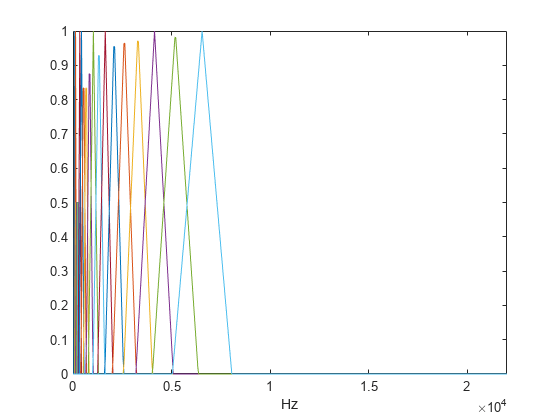cepstralCoefficients
Extract cepstral coefficients
Description
coeffs = cepstralCoefficients(S,Name=Value)
For example, coeffs =
cepstralCoefficients(S,Rectification="cubic-root") uses cubic-root rectification
to calculate the coefficients.
Examples
Input Arguments
Name-Value Arguments
Output Arguments
Algorithms
Given an auditory spectrogram, the algorithm to extract N cepstral coefficients from each individual spectrum comprises the following steps.
Rectify the spectrum by applying a logarithm, cubic root, or optionally perform no rectification.
Apply the discrete cosine transform (DCT-II) to the rectified spectrum.
Return the first N coefficients from the cepstral representation.
For more information, see [1].
References
[1] Rabiner, Lawrence R., and Ronald W. Schafer. Theory and Applications of Digital Speech Processing. Upper Saddle River, NJ: Pearson, 2010.
Extended Capabilities
Version History
Introduced in R2020b
See Also
Functions
mfcc|gtcc|audioDelta|designAuditoryFilterBank|melSpectrogram|stft




